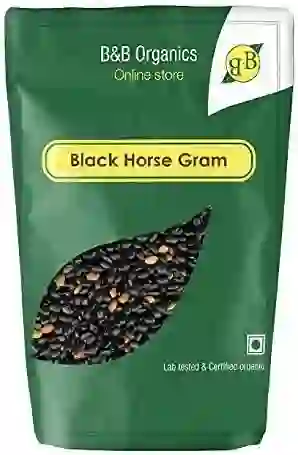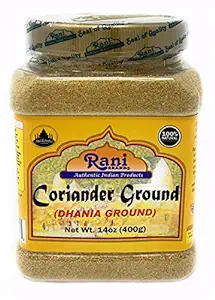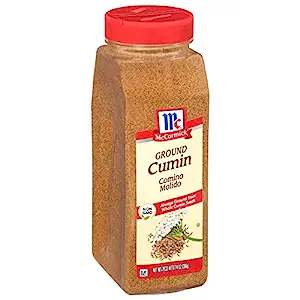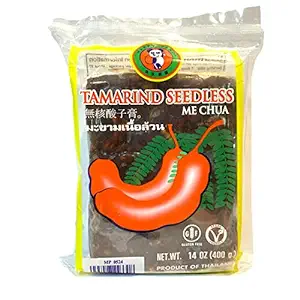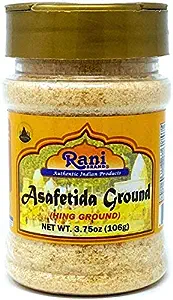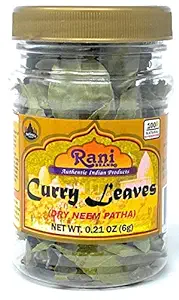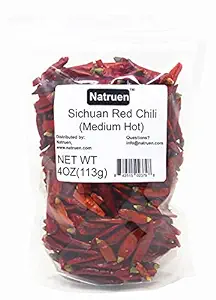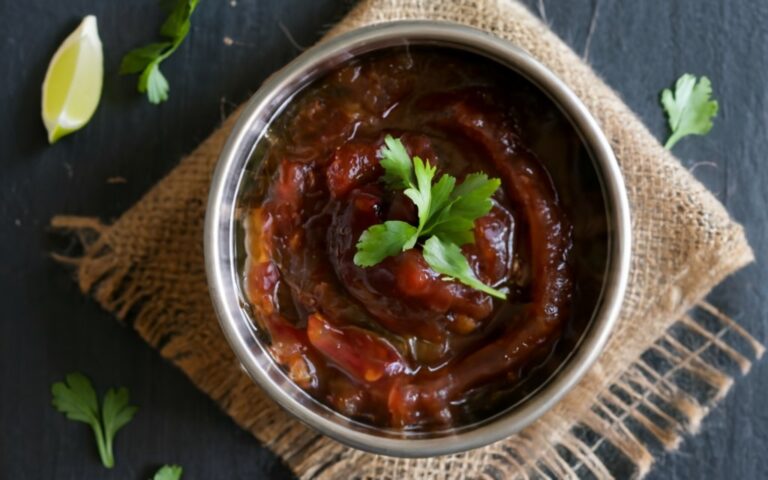Taste the Tradition: Ulavcharu Simplified
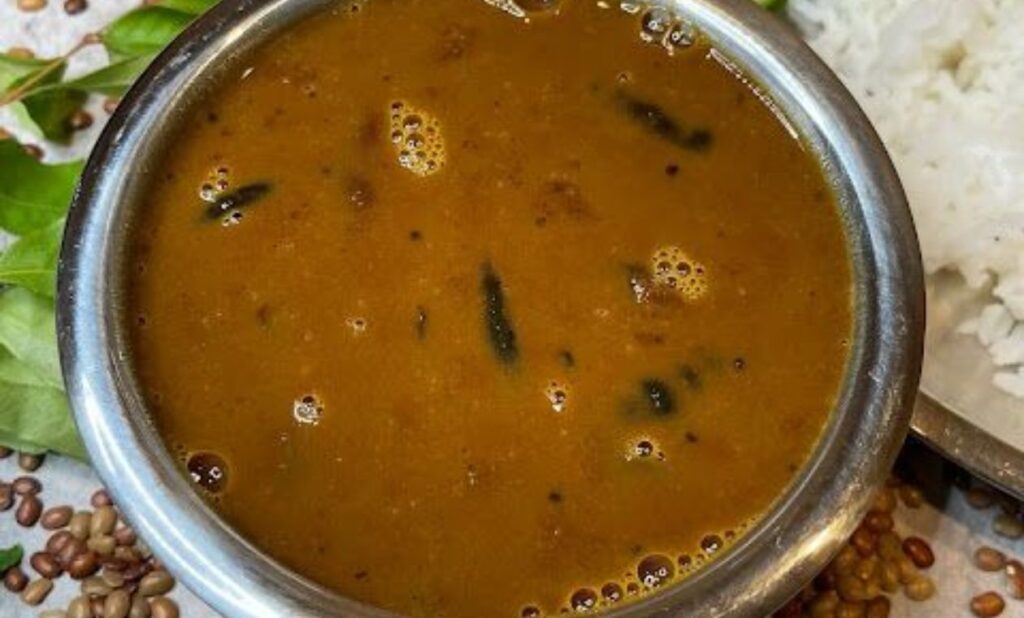
Ulavcharu, a name that resonates with the heart and soul of South Indian cuisine, is far more than just a culinary delight; it’s a testament to the rich culinary traditions of the region. This dish, whose origins trace back to the southern states of India, carries with it the unique flavors, history, and stories of a vibrant culture.
Born in the heartland of South India, Ulavcharu holds a special place in the hearts of locals. It’s a dish that transcends generations, a dish that grandmothers pass down to their grandchildren, ensuring the legacy of South Indian flavors endures. This regional delicacy is often prepared during festivals, family gatherings, and cherished occasions, making it a true symbol of togetherness and celebration.
Beyond its regional significance, Ulavcharu has made a mark on the culinary map globally. Its distinctive blend of flavors and the comforting warmth it offers have won the hearts of food enthusiasts worldwide. In recent years, it has become a sought-after dish in many international kitchens, further solidifying its status as a beloved global delicacy.
Close your eyes and imagine the comforting aroma of Ulavcharu wafting through your kitchen, as a hearty pot of this dish simmers on the stove. The fragrance of roasted spices, the tanginess of tamarind, and the earthiness of horse gram all come together in perfect harmony, promising a culinary experience like no other.
In this blog, we invite you to embark on a journey into the heart of Ulavcharu. We’ll not only unravel its history and regional significance but also guide you through crafting this delectable dish in your own kitchen. Whether you’re a seasoned cook or a novice in the world of South Indian cuisine, this guide promises to make Ulavcharu accessible and enjoyable.
So, prepare to tantalize your taste buds and explore the cultural tapestry of South India through the magic of Ulavcharu. Let’s dive into the world of flavors, traditions, and simplicity as we unravel the secrets of this beloved South Indian dish.
Ingredients
Ulavcharu is a culinary masterpiece that harmoniously blends a variety of flavors and textures. To embark on your journey to create this South Indian delight, you’ll need the following ingredients:
Horse Gram: At the heart of Ulavcharu is the wholesome horse gram, a legume known for its earthy, nutty flavor and rich protein content. It forms the foundation of this dish, contributing both taste and nutrition.
Tamarind: Tamarind, with its tangy and slightly sweet notes, imparts the quintessential sourness to Ulavcharu. It balances the earthiness of horse gram and elevates the overall taste profile.
Seasonal Vegetables: Ulavcharu is a versatile dish that welcomes a variety of seasonal vegetables. From drumsticks to brinjal (eggplant) and pumpkin, the choice of vegetables can vary according to what’s available and in season.
Spices (Coriander, Cumin, Fenugreek): A blend of ground spices, including coriander, cumin, and fenugreek seeds, provides depth and complexity to the dish. These spices add layers of flavor that make Ulavcharu a culinary masterpiece.
Curry Leaves: Fresh curry leaves infuse the dish with their distinct aroma and flavor. They’re an essential component of South Indian cuisine and contribute to the authenticity of Ulavcharu.
Asafoetida: Often referred to as “hing” in Indian cuisine, asafoetida adds a unique umami and garlic-like flavor to the dish. It’s used sparingly but plays a crucial role in enhancing the overall taste.
Red Chili: Red chilies provide the much-loved heat in Ulavcharu. The level of spiciness can be adjusted to your preference, making this dish adaptable to different taste buds.
Garlic: Fresh garlic cloves bring a pungent and robust flavor to Ulavcharu. They’re typically crushed or minced before being added to the dish.
Salt: A pinch of salt, to taste, is the element that brings all the flavors together and enhances the overall taste of the dish.
Water: While it might seem obvious, water is a crucial ingredient in Ulavcharu. It’s used for cooking the horse gram and vegetables to the perfect consistency.
Cooking Oil: A small amount of cooking oil is used for tempering the spices and sautéing the ingredients, adding a touch of richness to the dish.
Each of these ingredients contributes to the rich tapestry of flavors that make Ulavcharu a beloved South Indian delicacy. As you gather these ingredients and prepare to cook, you’re embarking on a culinary journey that promises not just a delicious meal but a deep dive into South Indian traditions and tastes.
Traditional Ulavcharu
The traditional Ulavcharu is a treasure trove of South Indian culinary heritage, deeply rooted in the heartland of the Deccan region. Its preparation is a testament to the time-honored cooking techniques and flavors that have been cherished for generations.
To craft this culinary masterpiece, you’ll need:
Ingredients:
- Horse Gram
- Tamarind
- Seasonal Vegetables
- Spices (Coriander, Cumin, Fenugreek)
- Curry Leaves
- Asafoetida
- Red Chili
- Garlic
- Salt
- Water
- Cooking Oil
Step-by-Step Recipe:
- Preparing the Horse Gram: Begin by washing the horse gram thoroughly and soaking it in water for a few hours or overnight. This softens the legumes and reduces cooking time. Drain the water and set aside.
- Tamarind Extract: Extract the tamarind juice by soaking a small ball of tamarind in warm water. Squeeze and strain to obtain a tangy tamarind extract. Set aside.
- Tempering: Heat a tablespoon of cooking oil in a deep pan or pressure cooker. Add mustard seeds, cumin seeds, fenugreek seeds, and asafoetida. Allow the seeds to splutter and release their aromatic flavors.
- Sautéing Vegetables: Add the seasonal vegetables of your choice, such as drumsticks, brinjal, and pumpkin. Sauté them for a few minutes until they begin to soften.
- Adding Spices: Incorporate the ground coriander, cumin, and fenugreek seeds into the pan. Stir well to coat the vegetables with these aromatic spices.
- Tamarind Infusion: Pour in the tamarind extract, allowing the tanginess to infuse into the mixture. This step adds a distinctive sourness to Ulavcharu.
- Cooking Horse Gram: Add the soaked horse gram to the pan and mix it with the other ingredients. Pour in enough water to cover the mixture and bring it to a boil.
- Pressure Cooking: If using a pressure cooker, transfer the mixture to it and cook for about 3-4 whistles, or until the horse gram is tender and the flavors have melded beautifully.
- Final Touch: Once cooked, add salt to taste, chopped garlic, and curry leaves. Simmer for a few more minutes until the flavors meld.
Historical Background and Regional Variations:
The history of Ulavcharu is closely intertwined with South India’s agricultural heritage. It originated as a hearty and nutritious meal for farmers, providing them with the energy needed for their strenuous work in the fields. Over the years, this humble dish evolved, incorporating regional variations. In Andhra Pradesh, for instance, it might be spicier, while in Tamil Nadu, it may have a milder flavor.
Calorie Information and Portion Size:
A serving of traditional Ulavcharu typically contains approximately 150-200 calories, making it a wholesome and satisfying meal. The portion size can vary, but a standard serving is about 1 cup.
Indulging in a bowl of traditional Ulavcharu is not just a culinary experience; it’s a journey back in time, a taste of South Indian heritage on your plate. It’s a dish that brings together the rustic charm of the countryside with the vibrant flavors of South India, making it a beloved classic that continues to win hearts.
Ulavcharu with a Twist
Prepare to embark on a culinary adventure as we explore a delightful variation of the beloved Ulavcharu. In this section, we’ll introduce you to “Ulavcharu with a Twist,” a captivating rendition that promises to elevate your taste buds to new heights.
Ingredients:
- Horse Gram
- Tamarind
- Seasonal Vegetables (Carrots, Bell Peppers, Baby Corn)
- Spices (Coriander, Cumin, Mustard Seeds)
- Curry Leaves
- Asafoetida
- Red Chili Powder
- Ginger-Garlic Paste
- Salt
- Water
- Ghee (Clarified Butter)
- Fresh Coriander Leaves (for garnish)
Step-by-Step Recipe:
- Roasting Horse Gram: Begin by dry roasting the horse gram until it releases its nutty aroma and turns a shade darker. Allow it to cool and then soak it for a few hours or overnight. Drain and set aside.
- Tamarind Extract: Extract tamarind juice from a lemon-sized ball of tamarind. Set aside.
- Tempering: Heat a tablespoon of ghee in a pan. Add mustard seeds, cumin seeds, and asafoetida. Let them sizzle and release their flavors.
- Aromatic Base: Add a tablespoon of ginger-garlic paste and sauté until it turns golden brown.
- Sautéing Vegetables: Add a colorful mix of seasonal vegetables like carrots, bell peppers, and baby corn. Sauté them until they become slightly tender.
- Spices and Tamarind: Add the ground coriander, cumin, and red chili powder to the vegetables. Stir in the tamarind extract for a tangy kick.
- Cooking Horse Gram: Incorporate the soaked horse gram into the mixture. Pour in enough water to cover the ingredients, and simmer until the horse gram is cooked to perfection.
- Final Touch: Season with salt to taste. Drizzle a bit of ghee for added richness and a heavenly aroma. Garnish with fresh coriander leaves.
Calorie Information and Portion Size:
A serving of “Ulavcharu with a Twist” typically contains approximately 220-250 calories, making it a wholesome and satisfying meal. The portion size is about 1 to 1.5 cups, depending on your appetite.
This unique twist on Ulavcharu not only celebrates the classic flavors but also introduces a modern vibrancy that’s perfect for those seeking a fresh take on a beloved South Indian dish. So, prepare to be pleasantly surprised as you savor the exciting fusion of tastes and textures in every spoonful.
Vegan Ulavcharu
Indulge in the flavors of South India while adhering to a vegan lifestyle with our “Vegan Ulavcharu” recipe. This variation offers all the traditional charm and mouthwatering taste of Ulavcharu, without the use of any animal-derived ingredients.
Ingredients:
- Horse Gram
- Tamarind
- Seasonal Vegetables (Drumsticks, Brinjal, Pumpkin)
- Spices (Coriander, Cumin, Fenugreek)
- Curry Leaves
- Asafoetida
- Red Chili
- Garlic
- Salt
- Water
- Cooking Oil (Use vegetable or coconut oil)
- Vegan Butter (optional, for added richness)
- Fresh Coriander Leaves (for garnish)
Step-by-Step Recipe:
- Preparing the Horse Gram: Begin by washing and soaking the horse gram in water for several hours or overnight. Drain and set aside.
- Tamarind Extract: Extract tamarind juice from a small ball of tamarind. Set aside.
- Tempering: Heat a tablespoon of cooking oil in a deep pan. Add mustard seeds, cumin seeds, fenugreek seeds, and asafoetida. Let them sizzle and release their flavors.
- Sautéing Vegetables: Add the seasonal vegetables of your choice, such as drumsticks, brinjal, and pumpkin. Sauté them for a few minutes until they begin to soften.
- Adding Spices: Incorporate the ground coriander, cumin, and fenugreek seeds into the pan. Stir well to coat the vegetables with these aromatic spices.
- Tamarind Infusion: Pour in the tamarind extract, allowing the tanginess to infuse into the mixture. This step adds the distinctive sourness to Ulavcharu.
- Cooking Horse Gram: Add the soaked horse gram to the pan and mix it with the other ingredients. Pour in enough water to cover the mixture and bring it to a boil.
- Pressure Cooking: If using a pressure cooker, transfer the mixture to it and cook for about 3-4 whistles, or until the horse gram is tender and the flavors meld beautifully.
- Final Touch: Once cooked, add salt to taste, chopped garlic, and curry leaves. Simmer for a few more minutes until the flavors meld.
- Optional Vegan Butter: For added richness, you can stir in a small amount of vegan butter.
Vegan Ulavcharu is not just a delicious dish; it’s also a health-conscious choice. By omitting animal products, this version is lower in saturated fats and cholesterol. It’s rich in plant-based proteins from the horse gram and bursting with the goodness of seasonal vegetables. Moreover, it’s a delightful way to incorporate more fiber and antioxidants into your diet, thanks to the array of veggies and spices.
The absence of dairy products also makes this Ulavcharu a dairy-free and lactose-free delight, suitable for those with lactose intolerance or following a vegan lifestyle.
Calorie Information and Portion Size:
A serving of Vegan Ulavcharu typically contains approximately 150-180 calories, making it a healthy and satisfying meal. The portion size is about 1 to 1.5 cups, depending on your appetite.
This vegan-friendly twist on Ulavcharu not only respects dietary choices but also celebrates the vibrant flavors of South Indian cuisine. It’s a dish that nourishes both the body and the soul, providing a guilt-free indulgence in the world of delicious and wholesome food.
Taste Recipe Special Style
Ingredients:
For our signature Taste Recipe Special Style of Ulavcharu, you’ll need:
- 1 cup of Horse Gram
- A small ball of Tamarind
- Seasonal Vegetables (Drumsticks, Eggplant, Okra)
- Spices (Coriander, Cumin, Mustard Seeds)
- Curry Leaves
- Asafoetida
- Red Chili Powder
- Garlic
- Salt
- Water
- Cooking Oil (Use vegetable or coconut oil)
- Ghee (Clarified Butter)
- Fresh Coriander Leaves (for garnish)
- Roasted Peanuts (for crunch)
- Freshly Grated Coconut (for a tropical twist)
Instructions:
- The Roasted Peanut Crunch: Begin by dry roasting the horse gram until it releases its nutty aroma and turns a shade darker. Allow it to cool and then soak it for a few hours or overnight. Drain and set aside.
- Tamarind Extract: Extract tamarind juice from a lemon-sized ball of tamarind. Set aside.
- Tempering: Heat a tablespoon of ghee in a pan. Add mustard seeds, cumin seeds, and asafoetida. Let them sizzle and release their flavors.
- Aromatic Base: Add a tablespoon of ginger-garlic paste and sauté until it turns golden brown.
- Sautéing Vegetables: Add a colorful mix of seasonal vegetables like carrots, bell peppers, and baby corn. Sauté them until they become slightly tender.
- Spices and Tamarind: Add the ground coriander, cumin, and red chili powder to the vegetables. Stir in the tamarind extract for a tangy kick.
- Cooking Horse Gram: Incorporate the soaked horse gram into the mixture. Pour in enough water to cover the ingredients, and simmer until the horse gram is cooked to perfection.
- Final Touch: Season with salt to taste. Drizzle a bit of ghee for added richness and a heavenly aroma. Garnish with fresh coriander leaves.
- Optional Vegan Butter: For added richness, you can stir in a small amount of vegan butter.
What sets our Taste Recipe Special Style apart is its infusion of colorful vegetables, the aromatic essence of ghee, and a touch of ginger-garlic paste. This version presents a symphony of flavors and textures that dance on your taste buds.
The addition of carrots, bell peppers, and baby corn not only enhances the visual appeal but also introduces a delightful crunch and sweetness to the dish. Ginger-garlic paste elevates the aromatic quotient, infusing a tantalizing fragrance into every bite.
Moreover, the drizzle of ghee imparts a rich, buttery undertone that complements the earthy horse gram and balances the tanginess of tamarind. Our Taste Recipe Special Style is an exciting fusion of tradition and innovation, delivering a burst of flavors that is sure to leave a lasting impression.
A serving of our Taste Recipe Special Style typically contains approximately 220-250 calories, making it a wholesome and satisfying meal. The portion size is about 1 to 1.5 cups, depending on your appetite.
This unique twist on Ulavcharu not only celebrates the classic flavors but also introduces a modern vibrancy that’s perfect for those seeking a fresh take on a beloved South Indian dish. So, prepare to be pleasantly surprised as you savor the exciting fusion of tastes and textures in every spoonful.
Our Recommended Ingredients
Horse Gram
Horse gram is a nutrient-rich legume known for its earthy flavor. It’s a versatile ingredient that can be used in soups, stews, and traditional dishes like Ulavcharu. Elevate your culinary creations with the wholesome goodness of horse gram.
Coriander Powder
Coriander powder is a staple in Indian cooking, offering a burst of citrusy, herbal notes to your dishes. It’s a must-have spice for seasoning curries, marinades, and sauces. Bring out the authentic flavors of South Indian cuisine with high-quality coriander powder.
Cumin Powder
Cumin powder is the secret behind the warm, nutty undertones in many South Indian dishes. It’s an essential spice for tempering, and it adds depth to your recipes. Transform your kitchen into a fragrant haven with the aromatic appeal of cumin powder.
Tamarind
Tamarind is a tangy delight that brings a unique sourness to your dishes. It’s a key ingredient in Ulavcharu and many other South Indian recipes. Elevate your cuisine with the distinct tanginess of tamarind.
Asafoetida
Asafoetida, also known as “hing,” is a powerful spice used in tiny quantities to enhance the aroma and flavor of dishes. It’s a must-have for traditional South Indian cooking. Elevate your dishes with the unique taste of asafoetida.
Curry Leaves
Curry leaves are aromatic leaves used to infuse a delightful fragrance into South Indian recipes. They add a unique touch to your curries, stews, and chutneys. Elevate your culinary skills with the enticing aroma of curry leaves.
Red Chili
Red chili is the spice that gives South Indian dishes their fiery kick. Whether you prefer mild or hot, red chili can be tailored to your taste. Elevate your dishes with the perfect level of spiciness.
Tips and Recommendations
Cooking Ulavcharu is a delightful experience, but it can be made even more enjoyable with a few handy tips:
- Soak the Horse Gram: Remember to soak the horse gram for several hours or overnight. This not only reduces the cooking time but also ensures that the legumes cook evenly and become tender.
- Tamarind Balance: Adjust the amount of tamarind based on your preference for sourness. If you like it tangy, add a bit more tamarind; if you prefer it milder, use less.
- Control the Spice: Ulavcharu can vary in spiciness. Adjust the red chili powder to suit your heat tolerance. You can also add a green chili for an extra kick.
- Seasonal Vegetables: Embrace the versatility of Ulavcharu by using seasonal vegetables. This not only enhances the flavor but also supports local and sustainable eating.
Customize your Ulavcharu to match your taste and dietary preferences:
- Protein Swaps: While horse gram is traditional, you can experiment with other legumes like lentils or chickpeas for a unique twist.
- Veggie Variety: Mix and match seasonal vegetables to create your own flavor combinations. Don’t hesitate to try unique options like yam or spinach.
- Spice Spectrum: If you’re a fan of heat, add some green chilies or chili flakes. For a milder version, reduce or omit the red chili powder.
Complement your Ulavcharu with these delicious side dishes and accompaniments:
- Coconut Chutney: A classic South Indian coconut chutney is the perfect accompaniment. It balances the tanginess of Ulavcharu with a creamy, slightly sweet flavor.
- Pickles: A side of spicy mango or lime pickle can add an extra zing to your meal.
- Rice: Serve Ulavcharu with steamed white rice or brown rice for a satisfying meal.
Enhance the visual appeal and dining experience of your Ulavcharu:
- Garnish: Sprinkle freshly chopped coriander leaves or grated coconut on top of Ulavcharu for a burst of color and freshness.
- Accurate Portioning: Serve Ulavcharu in bowls or deep plates, ensuring each serving has a generous portion of horse gram and vegetables.
- Accompaniments: Place side dishes like coconut chutney or pickles in small bowls alongside Ulavcharu to add variety to each bite.
- Traditional Serveware: If you have traditional South Indian serveware like brass or copper vessels, using them can enhance the overall presentation.
With these tips and recommendations, you’re well-equipped to create, customize, and present Ulavcharu in a way that suits your preferences and impresses your guests. Whether you choose to stay true to tradition or add your own creative flair, Ulavcharu is a dish that’s bound to be a delightful addition to your culinary repertoire.
In Crux
In this flavorful journey through the world of Ulavcharu, we’ve explored the richness of South Indian cuisine and discovered the magic of this beloved dish. Let’s recap the key highlights:
- Introduction to Ulavcharu: We began by introducing you to Ulavcharu, a culinary gem that embodies the heart and soul of South Indian traditions. Its regional significance and global popularity showcase the cultural tapestry it’s woven into.
- Ingredients: We delved into the essential components that make up Ulavcharu, from the hearty horse gram to the tangy tamarind and an array of spices. These ingredients create a symphony of flavors in each spoonful.
- Different Styles of Ulavcharu: We explored various styles of Ulavcharu, from the traditional to the innovative. Each style offered a unique culinary experience, whether it’s the comforting embrace of the classic or the excitement of a twist.
- Tips and Recommendations: We provided valuable tips for preparing Ulavcharu, ingredient substitutions for customization, and suggestions for side dishes and accompaniments. These insights empower you to make Ulavcharu your own.
Now, it’s your turn to embark on a culinary adventure. We invite you to step into your kitchen, gather the ingredients, and create your own version of Ulavcharu. Whether you choose the traditional, the twist, or the vegan style, the joy of cooking and savoring this South Indian delight awaits.
But we don’t stop there. We encourage you to share your Ulavcharu journey with us. Let us know how it turned out, what unique twists you added, and the memories you created around the dining table. Your experiences enrich the culinary tapestry of Ulavcharu and inspire others to explore this flavorful world.
As you savor each spoonful of Ulavcharu, remember that it’s more than just a dish; it’s a piece of South Indian history, a symbol of togetherness, and a journey of taste and tradition.
So, go ahead, create, indulge, and share. We look forward to hearing about your Ulavcharu adventures and being a part of your culinary discoveries.
Thank you for joining us on this flavorful exploration, and until next time, happy cooking and happy eating!
FAQs about Ulavcharu
What is the main ingredient in Ulavcharu?
The star ingredient of Ulavcharu is horse gram, a small, nutty legume known for its earthy flavor and high protein content. Horse gram forms the foundation of this dish, imparting both taste and nutrition. It's complemented by a medley of spices, vegetables, and tamarind to create a harmonious flavor profile.
Can I customize Ulavcharu to suit my dietary preferences?
Absolutely! Ulavcharu is a versatile dish that welcomes customization. You can adjust the spiciness, choose your favorite seasonal vegetables, and even explore vegan variations. Feel free to make Ulavcharu your own by incorporating ingredients that align with your dietary preferences.
How do I make Ulavcharu spicy or mild?
Ulavcharu's spiciness can be tailored to your taste. To make it spicier, you can increase the amount of red chili powder or add green chilies during cooking. For a milder version, simply reduce the red chili powder or omit it altogether. It's all about finding the right balance for your palate.
Are there any side dishes that pair well with Ulavcharu?
Ulavcharu pairs beautifully with classic South Indian side dishes like coconut chutney or spicy pickles. The creamy coconut chutney balances the tanginess of Ulavcharu, while pickles add an extra kick. Steamed rice is also a popular accompaniment, creating a wholesome meal.
Can I make Ulavcharu ahead of time?
Yes, Ulavcharu can be made ahead and reheated. In fact, many people believe that the flavors deepen and improve with time. Store it in an airtight container in the refrigerator for a day or two, and reheat gently on the stovetop or in the microwave before serving.
What are the health benefits of Ulavcharu?
Ulavcharu is not just delicious; it's also nutritious. Horse gram, the main ingredient, is rich in protein, fiber, and essential nutrients. It's known for its potential to aid in weight management, control diabetes, and promote heart health. Additionally, Ulavcharu is often prepared with a variety of seasonal vegetables, adding vitamins and antioxidants to the mix.
Can I make Ulavcharu without tamarind?
While tamarind adds a distinctive tanginess to Ulavcharu, you can make it without tamarind if you prefer a milder taste. Simply omit the tamarind or replace it with a small amount of lemon juice for a different but equally delightful flavor.
What makes Ulavcharu vegan-friendly?
Ulavcharu can easily be adapted to a vegan diet by using vegetable oil instead of ghee for tempering and omitting any dairy products. The dish retains its rich flavors and becomes a vegan delight, suitable for those following plant-based lifestyles.
Can I freeze Ulavcharu for later use?
Yes, Ulavcharu can be frozen for later consumption. Allow it to cool completely, transfer it to a freezer-safe container, and store it in the freezer for up to three months. When ready to enjoy, thaw it in the refrigerator and reheat on the stovetop or in the microwave.

